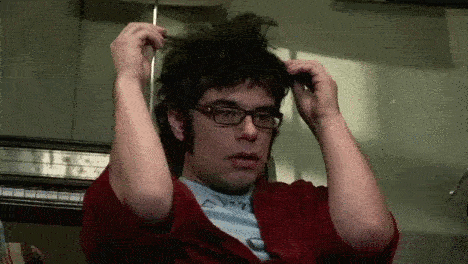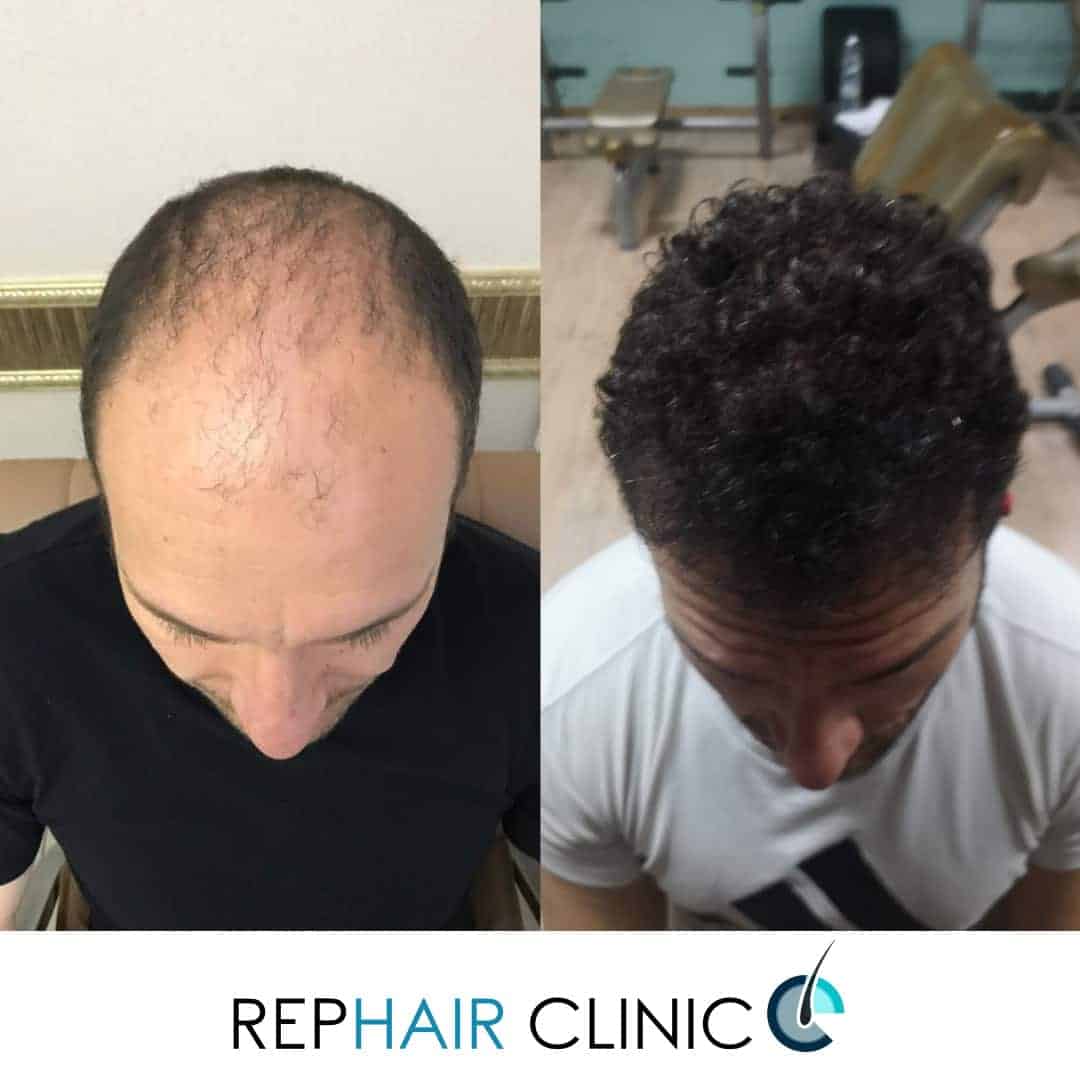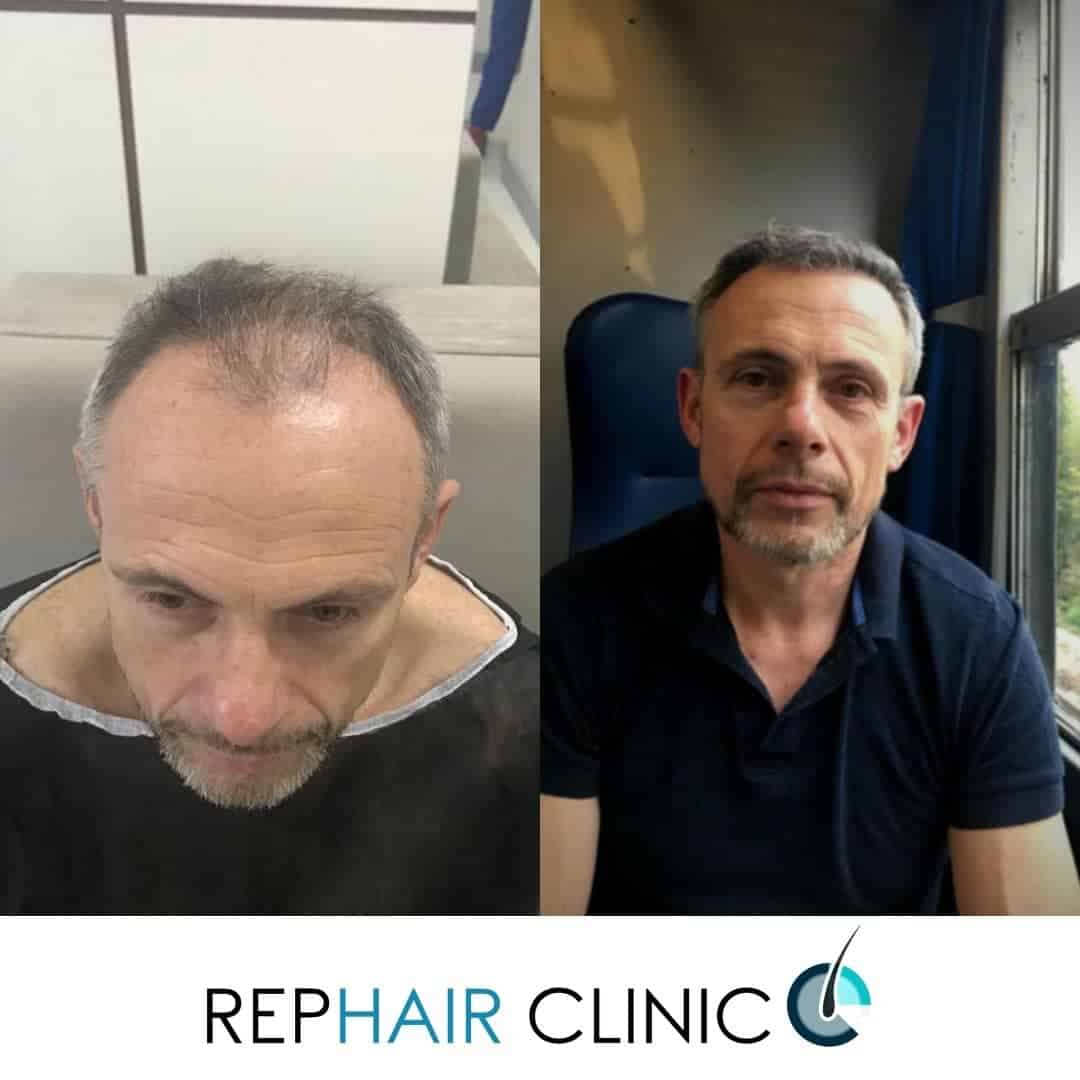Will I Not Have Baby Hairs After Hair Transplant
Before and afterwards pilus transplant: Stride-by-Pace State of affairs
Pilus transplantation is ane of the most effective treatments available to patients struggling with hair loss. When we look at examples before and later pilus transplant, we can see that people's hair grows in a good for you way that makes them feel better with the right procedure. Although it is not a permanent solution for thinning hair, it can help restore hair fullness and self-confidence in many people. In this postal service, nosotros will give details about the whole procedure, explain the recovery procedure, what to consider, and what to await after pilus transplantation.
Hair transplantation is the procedure of transplanting healthy hair follicles to areas where the hair follicle is no longer active and baldness develops utilizing microsurgical technologies. In other words, hair transplant surgery may exist a suitable selection for people suffering fromhair thinning or loss. In hair transplantation, the patient's own salubrious hair is added to the spilt area.
Hair transplantation is designed and performed completely individually.Hair follicles resistant to shedding are nerveless in the patient's nape surface area. Afterwards, these are transplanted into the channels established in the thinning or entirely shedding areas during the hair transplantation process. The goal of this method is to give hair the most natural and good for you appearance possible.
The near mutual type of hair loss we encounter today is male pattern hair loss.
The regression of the hairline in the forehead expanse and the opening of the apex are the near mutual symptoms. Besides, male person pattern spillage can be seen not but in men but also in women.
Today, about half of all men over the age of l struggle with hair loss.
Things to consider before Hair Transplant
Hair transplants are typically more successful than over-the-counter hair restoration products. Merely in that location are some factors to consider:
- Anywhere from 10 to lxxx per centum of transplanted hairTrusted Source will fully abound back in an estimated three to four months.
- Like regular hair, the transplanted hair will sparse over time.
- People with fallow hair follicles (sacs that commonly comprise hair beneath the peel but no longer grow hair) may have less constructive transplants, report suggests that plasma therapy can aid upwards to 75 percent or more of the transplanted hairs fully grow back.
Hair transplants don't work for anybody. They're mainly used to restore hair if y'all're balding or thinning naturally or accept lost hair due to an injury.
About transplants are done with your existing hair, and then they're not equally constructive for treating people with:
- widespread thinning and alopecia
- pilus loss due to chemotherapy or other medications
- thick scalp scars from injuries
Expectations
After the surgery, your scalp may be very tender. You may need to take pain medications for several days. Your surgeon will have you wear bandages over your scalp for at to the lowest degree a mean solar day or ii. He may also prescribe an antibiotic or an anti-inflammatory drug for you lot to accept for several days. Most people can render to work 2 to 5 days subsequently the operation.

Performing a Pilus Transplant
Just put, a hair transplant takes hair you have and transfers it to an area where you don't accept hair. It's typically taken from the back of your head, simply tin besides be taken from other parts of your body. Before starting a transplant, your surgeon sterilizes the area where the hair volition be removed and numbs it with a local anesthetic. You can also request sedation to stay asleep for the procedure.
Your surgeon and so performs one of ii transplant methods: FUT or FUE.
Follicular unit transplantation (FUT)
FUT is sometimes known every bit follicular unit strip surgery (FUSS). To perform a FUT procedure, your surgeon follows these steps:
- Using a scalpel, the surgeon removes a slice of your scalp, usually from the back of your caput. The strip size is typically about 6 to ten inches long but can stretch from ear to ear.
- They close the expanse where the scalp was removed with stitches.
- Your surgeon and their assistants split the scalp strip into smaller pieces with a scalpel. They may split the piece upward into every bit many as ii,000 smaller fragments, called grafts. Some of these grafts may incorporate merely one hair each.
- Using a needle or blade, the surgeon makes minor holes in your scalp where hair volition be transplanted.
- The surgeon inserts hairs from the removed piece of scalp into the puncture holes. This pace is called grafting.
- They and then cover the surgical sites with bandages or gauze.
The specific number of grafts you receive depends on the:
- type of pilus you have
- size of transplant site
- quality (including thickness) of hair
- hair colour
Follicular unit of measurement extraction (FUE)
- Later on shaving the back of the head, individual hairs are extracted one past one (grafts)
- Hair grafts are inserted into small-scale wounds in the scalp.
- You'll have a lot of tiny scars, only they won't be noticeable.
Pilus transplants typically take 1 day, but 2 or more treatments spaced a few months apart may be required if a large area is being treated.
Your surgeon will instruct you on how to treat your transplant. To help recovery and hair restoration, you should be provided with a spray to employ.
FUE Pilus Transplant Procedure
FUE technique process is now performed using micromotors, which shortens the time. This technique may also exist done with hair from the neck, breasts, and back. The transplanted hairs grow in the place where they were transferred.
Starting time, this procedure is used to create customized hairline designs. The most crucial stage of this approach is the creation of special channels in the transplanting region since these channels must be extremely narrow and at the original angle.
Hair in the donor area is trimmed, a local anesthetic is administered, and the grafts are removed with a specific surgical instrument with a 1 mm diameter. These hair grafts are inserted into the channels created in bald or sparsely hairy regions.
It is essential to open up channels thickly and perform dense transplantation in order for the region where hair is transplanted to be thick. 3000-4000 grafts may be obtained with this technique, which requires a team and lasts quite longer than the FUT technique.
In recent years,FUE pilus transplant has mostly overtaken the FUT technique.

Reconstructing The Frontal Hairline
The frontal hairline is often the about credible part of a completed hair transplant. Nonetheless, hairline requirements vary from patient to patient.
Some individuals want a hairline that is rather low and dumbo. For example, a person in his 30s may have minor pilus loss (receding temples) and want to lower his hairline and fill up up his temples.
On the other hand, the individual must be fabricated aware of the prospect of his hair loss increasing, say, in his 40s, to the point where he will crave more pilus transplant treatments. Every bit a result, young patients seeking a hair transplant operation should keep in heed that their hair loss may continue, needing further and recurrent hair transplant procedures.
Pilus Restoration Process
Hair transplantation is a one-year process that includes both before and after transplant. Post-obit the pilus transplantation procedure, reddening, and crusting, chaff shedding, and shock shedding may occur. These are entirely typical processes. Information technology takes a yr for all of the transplanted hair to grow and for the handling's success to be fully noticeable.
-
Redness and Crusting:
Hair transplantation is performed past transferring grafts from the source area to the target area i at a time. Redness emerges on the skin as a result of this performance. Crusting happens during the healing phase of this location after the operation. The formed crusts can come up off in the next fifteen days.
-
Daze Shedding Process:
Shock shedding occurs when the remaining pieces of the transplanted pilus on the skin are shed, and new pilus fiber growth begins. Information technology happens i to three months after the crusts accept shed. The transplanted hair follicles are not damaged during the shock shedding period.

What To Expect: Hair Transplant Post-op Timeline
A hair transplant is a sensitive procedure. To run across the best earlier and later hair transplant results, following the post-operative recommendations is critical for achieving the best outcomes. Virtually patients see benefits 6 to nine months following surgery. Information technology might take up to a year for some people. Information technology is critical to understand that the transplanted hair volition fall out betwixt two and eight weeks following the procedure.
Recovery afterwards Hair Transplant
FUT and FUE may each have several hours to several days to complete. In role, this depends on the amount of work performed by the surgeon. Yous volition go dwelling house the same day of the process.
Once the surgery is done, your surgeon carefully removes any bandages. The area may exist bloated, and then your surgeon might inject triamcinolone into the expanse to go along the swelling downwardly.
Within 2 to 3 weeks afterwards surgery, the transplanted hair volition autumn out, merely you should showtime to notice new growth within a few months. Nigh people volition meet 60% of new hair growth after vi to ix months. Some surgeons prescribe the hair-growing drug minoxidil (Rogaine) to improve hair growth later transplantation, only it'south not clear how well information technology works.
You'll likely feel pain or soreness at the transplant site as well as in the area where hair was taken from. For the next few days, your surgeon may prescribe:
- pain medications, such as ibuprofen (Advil)
- antibiotics to prevent infections
- anti-inflammatories, such as an oral steroid, to relieve swelling
- medications such as finasteride (Propecia) or minoxidil (Rogaine) to assistance stimulate hair growth
Here are some aftercare tips for hair transplant surgery:
- Wait a few days after the surgery to wash your hair. Only apply balmy shampoos for the get-go few weeks.
- You should be able to return to piece of work or normal activities in near 3 days.
- Don't press a brush or comb down over the new grafts for about iii weeks.
- Don't wearable whatsoever hats or pullover shirts and jackets until your medico says it's OK.
- Don't do for almost a week.
Don't worry if some hairs fall out. This is part of the process. The transplanted hair may not grow much or seamlessly lucifer the pilus around it for a few months.

Tips on post-surgical FUE pilus transplant
Desire to accept a amend FUE hair transplant consequence, you should at kickoff consult to a professional medico and have an assessment; alike, post-surgical treatment and care are also of import, or more than important for a better hair transplant issue.
Day one: Do not bear on and launder the surgical area the showtime dark. If possible, encompass the head with a hat while going out. On sleeping time, do elevate your head to avoid rubbing off or detaching any of the grafts. three or 4 pillows are helpful to attain an ideal angle.
Day ii – Solar day 4: Practice avoid touching, scratching or rubbing the transplanted area and exposure under sun for a long menstruum, as sunburn may affect the pigmentation of the skin and also damage the transplanted hair.
Day 5 – Solar day vii: While on this period, you can shampoo a piffling longer on the surgical surface area to brand the scabs soften. And you tin resume all your physical activities and sports.
Week 2 – Calendar week four: Every bit hair follicles at this menses take entered the resting phase, so information technology will temporarily start losing hair shafts. Practise not panic. Just continue to launder and even dye your hair every bit you normally do.
Month 2 –Calendar month 3: Practise follow the doctor's recommendation and take finasteride, monoxide or whatsoever other treatment to minimize daze loss.
Month four – Month half dozen: Do remember to utilise a strong sunblock SPF xxx while going exterior in the sun.
Month 6 – Month 12: As the transplanted pilus continues to get thicker and longer from fine baby hair, y'all can style them the way you lot desire.
Month 12 – Month 18: Congratulations to you the last pilus stage and yous brand a alter in your life, Relish your new pilus.

Hair transplant side effects
The nearly common side issue is scarring, and this cannot exist avoided with whatever procedure.
Other potential side effects include:
- infections
- crust or pus drainage effectually the surgical sites
- scalp pain, itching, and swelling
- inflammation of pilus follicles
- bleeding
- losing sensation around the surgical sites
- visible areas of pilus that don't lucifer the surrounding hair or are noticeably thinner
- continuing to lose pilus if your hair is still balding
Minoxidil and Propecia tin also have side effects, such every bit:
- irritated scalp
- dizziness
- chest pain
- headaches
- irregular center rate
- mitt, foot, or breast swelling
- sexual dysfunction

Does Hair Transplant Assist to Recover Hair Loss?
Hair loss can affect either your scalp or your entire body, and it can be temporary or permanent. It might exist caused by genetics, hormonal changes, medical disorders, or it can be a typical aspect of aging. Anyone can lose hair on their caput, but males are more likely to do so
Hair transplants are performed to add extra hair to a thinning or balding region of your head. It is accomplished by transplanting hair from thicker areas of the scalp or other regions of the body to the thinning or balding area of the scalp.
It is normal to accept hair loss post-obit a hair transplant. After a hair transplant, temporary pilus loss is common. This is a short-term agin effect of the hair restoration procedures.
It is usual for transplanted hair to fall out from shock two to eight weeks following surgery. By the 3rd month later on the transplant, the pilus seems normally thinner.
Once the initial shock wears off, the transplanted follicles continue to create hair regularly. Your hair will seem thicker and healthier as your transplanted hair grows. Therefore, a hair transplant is one of the excellent treatments for a multifariousness of pilus loss conditions.
What Causes Hair Thinning?
Hair loss or thinning hair happens for a variety of causes, many of which are beyond your command. Hair loss is most oft caused by genetic factors. Women and men have distinct types of hair loss. The hair transplant may now exist done with real tissues thank you to donors in the men'south neck. You may regenerate your hair with hair follicles obtained from the donor region thanks to a delicate hair transplant, and you can repossess your former paradigm or the epitome you lot choose. And it is a really unproblematic procedure.
The region to be transplanted does not have to be fully hair-gratuitous in thin hair. Tightening is another method of pilus transplanting. Hair transplantation tin be accomplished by combining them. In other words, it is possible to transplant hair that seems thinner more frequently.
Past transplanting hair into thinning pilus, people can regain their self-confidence and happiness when they are in an uncomfortable state of affairs or are unable to socialise. As a upshot of sparse hair transplantation, the individual'south quality of life improves.
Consequently, hair transplants are successful treatments for restoring hair growth after a variety of reasons of hair loss/hair thinning. The success charge per unit of hair transplant surgery is determined past a multifariousness of factors, including the surgeon's expertise and feel, likewise as the thickness of the donor'due south hair.

What happens afterwards the surgery?
Your hair is washed in the clinic three days after the thinning hair transplantation. The patches on your skin are then torn during the surgery. Your new hair begins to grow in the place where you transplanted your pilus 2 to 3 months post-obit surgery. After 6 months, all of your hair will accept grown. At the end of the 12th month, the pilus transplant development procedure is completed.
mccafferydeniess67.blogspot.com
Source: https://rephairclinic.com/en/before-and-after-hair-transplant/
0 Response to "Will I Not Have Baby Hairs After Hair Transplant"
Postar um comentário